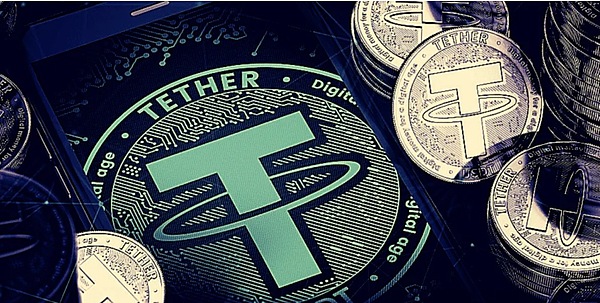Author: Zhu Weisha
Tether recently officially announced its compliance stablecoin USAT issuance plan for the U.S. market and appointed Bo Hines, the former head of the Trump Digital Assets Advisory Committee, as CEO. This move is seen as a key strategy for Tether to actively respond to strict regulatory requirements in the U.S., such as the GENIUS Act, and provides a new compliance model for the global stablecoin development. The market expects the USAT stablecoin to be officially launched by the end of 2025.

USAT's architectural design highlights a high degree of compliance and innovative mechanisms: it will be issued by Anchorage Digital, a crypto bank regulated by the U.S. federal government, with the well-known financial institution Cantor Fitzgerald serving as the reserve asset custodian and primary dealer (an institution with priority participation in U.S. Treasury transactions).
This mechanism closely aligns with Hong Kong's currency peg system—Tether is akin to the Hong Kong Monetary Authority, overseeing the issuance, security, and value anchoring of the stablecoin; Anchorage Digital corresponds to the note-issuing banks in Hong Kong (such as HSBC, Standard Chartered, and Bank of China); more importantly, USAT may introduce more regulated banks to participate in its issuance in the future, forming a "multi-institution issuance of a single stablecoin" pattern. This also addresses the concern raised in the article "Will the Introduction of the Stablecoin Act Trigger a Financial Tsunami?" regarding the potential market chaos if each bank issues its own stablecoin, and aligns with the author's recent writing on "77 Stablecoin License Applications – Major Opportunities and Challenges for Financial Innovation in Hong Kong," which advocates for the issuance of a U.S. dollar stablecoin USHK led by the Monetary Authority.
Unlike the direct self-management model of USDT, USAT emphasizes third-party custody. This "issuance-custody-regulation" separation design greatly enhances transparency and market trust. However, the Monetary Authority has not disclosed the names of the major banks where it holds U.S. dollar assets through its foreign exchange fund.
Although the Hong Kong Monetary Authority has not publicly disclosed the specific custodian banks for its U.S. dollar reserves, its years of accumulated experience in managing the foreign exchange fund can still provide a solid institutional foundation for USHK. If it can further optimize its information disclosure mechanism in the future, it will be more beneficial in enhancing public trust.
From the perspective of the global stablecoin landscape, the U.S. will form a compliant stablecoin system with USAT and USDC standing strong together, both of which will assume regulatory functions similar to those of the Hong Kong Monetary Authority in the stablecoin field. The efficient and low-cost characteristics of cryptocurrencies have posed challenges to the traditional fiat currency system. The U.S. is further consolidating the dollar's advantage through legislative and compliance innovations, a trend that global financial practitioners should pay close attention to, but it is necessary to view this issue beyond traditional financial thinking to avoid missing this historical opportunity.
For Hong Kong, issuing the U.S. dollar stablecoin USHK presents a unique historical opportunity and market potential, as there is a window period for replacing the non-compliant USDT.
Based on Hong Kong's geographical advantages as an international financial center, its mature financial regulatory system, and the market trust built over years of operating under a currency peg system, USHK is expected to replace USDT and rank among the top three U.S. dollar stablecoins globally, with optimistic expectations of capturing 40% to 50% of the future global stablecoin market share.
In terms of technical path selection, Tether has disclosed that USAT will use the Hadron chain as its issuance platform. The Hadron chain is positioned as a multi-chain compliant issuance platform, serving as a multi-chain RWA (real-world asset) tokenization tool. It currently supports the Liquid network (Blockstream's Bitcoin sidechain, approximately 60 nodes, emphasizing confidentiality and fast settlement), Ethereum (open and transparent), and Avalanche (high throughput), with plans to connect to the TON chain (Telegram ecosystem, enhancing social applications).
The goal is to provide compliant solutions for traditional enterprises to issue tokens. However, it should be noted that the Hadron chain has issues such as code opacity, lack of public ledgers, and insufficient long-term testnet trials, making the overall project risk difficult to assess accurately.
In contrast, Ethereum's openness, high transparency, and mature ecosystem have already been validated by the market, making it undoubtedly a more reliable technical foundation for USDC and the future USHK. In the long run, the success of stablecoins must rely on three pillars: transparency, compliance, and credit—whether it is the practical experience of Hong Kong's currency peg system, the architectural design of USAT, or the author's theoretical deductions, all corroborate the correctness of the path of "a regulatory body similar to the Monetary Authority + a multi-institution issuance mechanism as support."
Hong Kong should seize the opportunity, learn from USAT's compliance experience, leverage its institutional advantages, accelerate the development and implementation of USHK, as the timing is fleeting. This is not only about financial innovation but also a strategic choice to consolidate Hong Kong's position in the new round of the global monetary landscape.
免责声明:本文章仅代表作者个人观点,不代表本平台的立场和观点。本文章仅供信息分享,不构成对任何人的任何投资建议。用户与作者之间的任何争议,与本平台无关。如网页中刊载的文章或图片涉及侵权,请提供相关的权利证明和身份证明发送邮件到support@aicoin.com,本平台相关工作人员将会进行核查。




